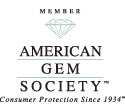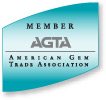September 16th, 2010 by James L. Sweaney, CGA, FGA. GG
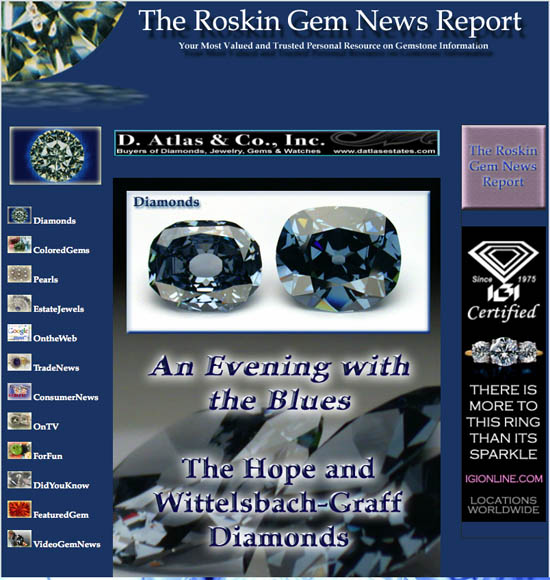
Our old friend and former colleague at GIA, Gary Roskin, has published an absolutely fascinating account of a major event at the pinnacle of the gem world. Under the auspices of the Smithsonian Institute, the most famous of all gems, the Hope Diamond, was brought together for the first time with the Wittelsbach Blue, now known as the Wittelsbach-Graff diamond, for the purpose of research and comparison. Part 1 is featured in Gary’s “The Roskin Gem News Report” at this URL, http://www.roskingemnews.com/Master_Page/Diamonds.aspx. Gary promises more to come in part 11. This is an outstanding read for those of you who love gems– don’t miss it!
We published a blog explaining some of the characteristics of blue diamonds in April 2009 when the 7.03 Cullinan Blue sold at auction for a world record price per carat for any gemstone, hammer price just under 10,000,000!
Tags: Gary Roskin, GIA, Hope Diamond, Roskin Gem News Report, Smithsonian Institute, type IIb diamonds, Wittelsbach Blue Diamond, Wittelsbach-Graff Diamond
Posted in Estate Jewelry, Gem Industry News, Gemstones, Jewelry Facts, Jewelry Services | Comments Off on The Rarified World of the Rarest of Gems
August 20th, 2010 by James L. Sweaney, CGA, FGA. GG
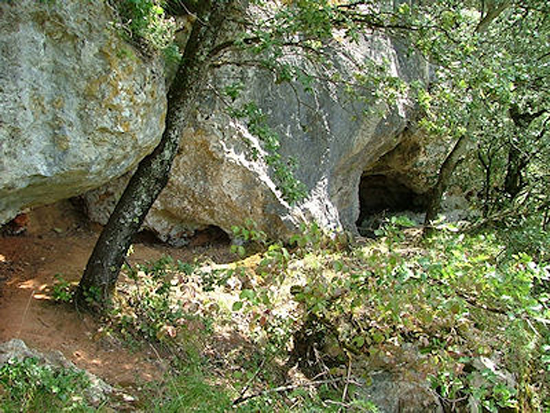
There's No Place Like Home
The desire and ability to exploit our environment and to utilize and improve the natural materials we find is rooted in our deepest past, and is in fact, part of the reason we are here today.
I was absolutely fascinated by an article in the August 2010 Scientific American, When the Sea Saved Humanity, that describes findings from an archaeological dig on the Horn of Africa. According to author Curtis W. Marean, his excavations in caves near Capetown show the presence of a small band of early humans during the Ice Age known as Marine Isotope Stage 6 (MIS6). Somewhere between ~195,00 to ~123,000 years ago, because of the cold dry climate, early Homo sapiens on the mother continent of Africa suffered a severe population crash– the population plummeted from more than 10,000 to a few hundred breeding individuals. Read the rest of this entry »
Tags: Cape Floral Region, Cape Town, Curtis W. Marean, endangered humans, fynbos, heat treatment, Ice Age, renosterveld, Scientific American, silcrete
Posted in Gemstones, Jewelry Facts | 1 Comment »
August 11th, 2010 by James L. Sweaney, CGA, FGA. GG
Those of you who have contemplated, mulled, dawdled, or just plain procrastinated about buying something during our Annual Clearance Sale, be warned– The sale is over Saturday, August 14, 5:30 PM. Don’t miss your chance to buy our first line jewelry at bargain basement prices! Get your christmas shopping done in August and save bundles! You’ll find drastic reductions on colored stone and diamond jewelry, designer jewels, estate jewelry, and Mardon Originals. Sorry, Raincross Collection and custom orders are not on sale.
Tags: annual sale
Posted in Estate Jewelry, Gemstones, Mardon Exclusive Jewelry, Mardon Happenings | Comments Off on Famous Annual Clearance Sale- 3 Days Left!
July 30th, 2010 by James L. Sweaney, CGA, FGA. GG
Look for fabulous values during our Famous Annual Sale, Tuesday, August 3 thru Saturday, August 14. You'll find great designer pieces, classic estate jewelry, and unique Mardon originals drastically marked down at true clearance prices up to 60% off.
Tags: Asscher cut diamond, Celtic Knot, GIA cert, Heidi Klum, Mardon Annual Sale, PayPal, Peter Storm, Phil Zahm, Precious Coral, Radiant cut diamond, Rap sheet, Retro, rose gold, tourmaline
Posted in Gem Industry News, Mardon Exclusive Jewelry, Mardon Happenings | Comments Off on Our Famous Annual Clearance Sale, 2010
July 14th, 2010 by James L. Sweaney, CGA, FGA. GG
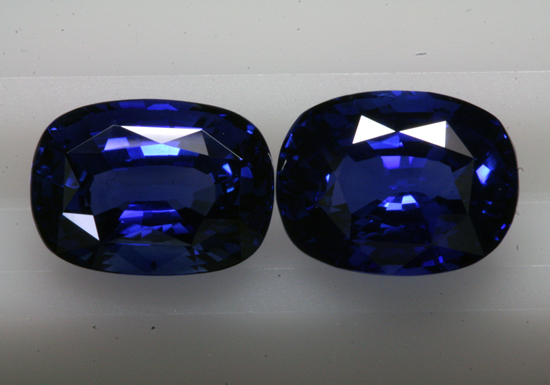
5 ct. Ceylon sapphires
These two sapphires are both from the island of Sri Lanka, both are heat enhanced, both are from the same vendor, both weigh about the same.
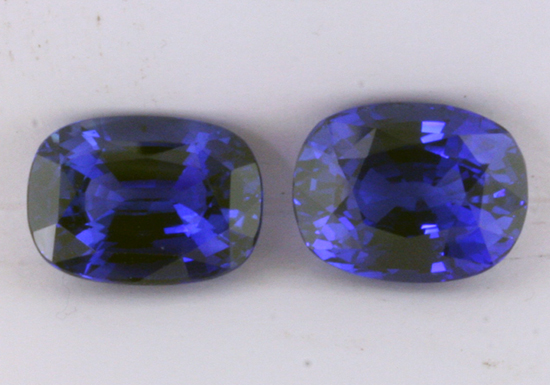
5 ct. Ceylon sapphires, v2
Here's another photograph, same stones, same photographer (myself), same camera, same photo stage, similar macro lens, slightly different lighting. Can you guess which one costs more?
Read the rest of this entry »
Tags: AGS, AGTA, Ceylon sapphires, consumer protection, Gemology 101, Sri Lanka
Posted in Gemstones, Jewelry Facts, Jewelry Services | Comments Off on Sapphires Illustrate the Wonder of Gems and the Limits of Perception
July 3rd, 2010 by James L. Sweaney, CGA, FGA. GG
We completed a most beautiful engagement ring a while back but weren’t able to post this blog till now. It was one of the most challenging projects we’ve ever done!
Our clients Megan and Mike, big fans of antique and period jewelry, fell in love with a 1920’s Art Deco platinum ring in our estate department, set with a dazzling one carat Old European cut diamond. We showed them several loose period cut diamonds, but this particular stone had so much life and sparkle they decided to buy the piece, use the stone for her new ring, and save the mounting for later.

Megan had a general idea of what she wanted– the design had to be lacy and delicate, with triangle-shaped natural blue sapphires on each side of the center. We asked her for design suggestions– she searched the web and came in with about 10 pages of pictures of period rings, all of which had elements that she liked! So the challenge was to get her to focus on what she really wanted.
After consulting with her, we concentrated on floral and ivy patterns, lots of hand engraving, and of course, the diamond and the blue sapphires, to create this first design. Read the rest of this entry »
Tags: Art Deco, CAD-CAM, cnc, Custom Design, filigree engagement ring, hand engraving, Mardon, milgrain, Old European, platinum, Plumeria
Posted in Custom Jewelry, Estate Jewelry, Featured Post, Gemstones, Jewelry Facts, Jewelry Services | Comments Off on A One-of-a-Kind Filigree Engagement Ring
June 22nd, 2010 by James L. Sweaney, CGA, FGA. GG
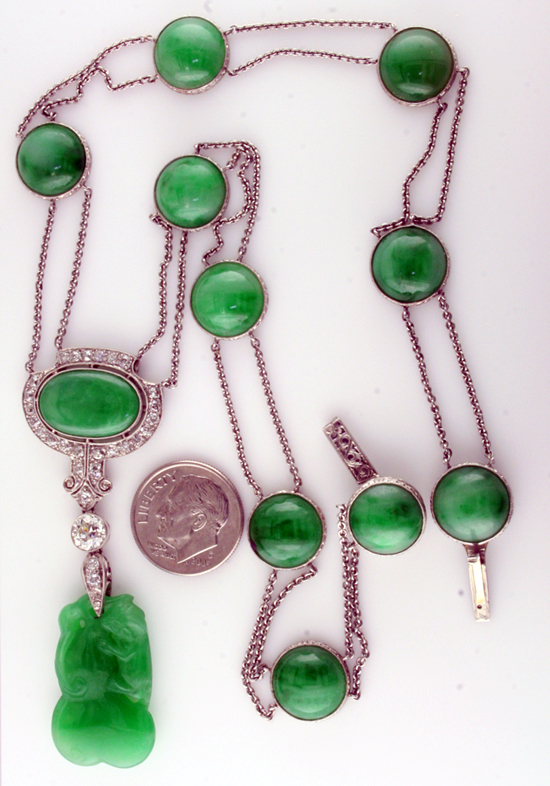
Art Deco Jadeite Necklace
We’ve been working on an insurance appraisal for this wonderful platinum necklace with diamonds and jadeite from the 1920’s and realized the piece has a lot to teach about grading and valuing jade.
Jade is not well understood by many folks. If I told you that jade can be one of the most expensive of all gemstones, you would probably be surprised– some pieces sell for well into six figures. Even jewelers who really know their way around the faceted stones have a hard time with jade, so we don’t often see really good jade like this necklace.
Jade is actually two different minerals. Nephrite is the one we see in ancient chinese carvings and artifacts, while jadeite, discovered in Burma (Myanmar) in the early 1800’s, is the more valuable type used in jewelry.
The more vivid and translucent colors of jadeite, especially the emerald green known as “Imperial” or “Kingfisher” are highly sought after, especially in Asia and can sell for truly astounding prices. When we grade jade as a gemstone, we are usually talking about jadeite.
We grade quality in diamonds according to the 4 C’s. When we grade quality in jadeite, besides grading the color as we do in other colored gemstones, we evaluate what I call “the 3 T’s”– translucence, texture, and tone.
Our Art Deco necklace is set with jadeite stones that blend well for color, but we can see different examples of the 3 T’s. Read the rest of this entry »
Tags: Art Deco, jadeite, nephrite, platinum
Posted in Estate Jewelry, Gemstones, Jewelry Facts, Jewelry Services | 1 Comment »
June 12th, 2010 by James L. Sweaney, CGA, FGA. GG

Robert M. Shipley, Courtesy of GIA Library
We thought this would be a great post the week before Father’s Day.
Often at Mardon Jewelers, we’re asked to perform an expert service by a client. Such was the case recently when we restored the ring that originally belonged to Robert M. Shipley, the founder of GIA.
Early in his career, Mr. Shipley realized that the lack of good information about gems was a real problem for the jewelry industry. Without a good base in the science of gems, many jewelers of the time perpetuated misinformation, like using the trade term “Smoky Topaz”– a misnomer for a different mineral entirely, Smoky Quartz, that we still hear even today.
Shipley studied gemology in Great Britain, graduating as the first American FGA, and became a firm believer in education as the proper foundation for a jewelry business. Besides establishing GIA and writing his famous correspondence course on Gemology, Shipley also founded the American Gem Society, a professional organization of jewelers dedicated to fair and honest business practices plus gemological education for both the jewelry professional and the consumer.
His achievements became models for today’s many gemological courses, laboratories, schools, and professional groups– Shipley was truly the father of the modern gemological movement.
This writer is privileged to have been educated in residence at GIA in 1976, to have worked professionally at GIA in both the Gem Trade Laboratory and the Jewelry Arts Progam, and to have known Mr. Shipley personally.

Robert M. Shipley ring, before restoration
We had seen and known of this ring for a number of years– it had been passed down thru the Shipley family from father to son and was in the possession of our client Ed Shipley, grandson of Robert M. Shipley. The ring, a classic 14K yellow and white gold gent’s ring by Jabel, an old line jewelry manufacturer, was set with 3 Old European cut diamonds. Though well matched for quality and size, the two outside stones were badly chipped after years of wear, and the settings were very worn. Read the rest of this entry »
Tags: American Ge, American Gem Society, diamond recutting, father to son, Father's Day, GIA, Jabel, Mardon Jewelers, Old European Cut, Robert M. Shipley, smoky quartz, smoky topaz
Posted in Featured Post, Gem Industry News, Jewelry Facts, Jewelry Services, Mardon Happenings | Comments Off on Restoring the Ring of GIA founder Robert M. Shipley- A Father’s Legacy
June 5th, 2010 by James L. Sweaney, CGA, FGA. GG
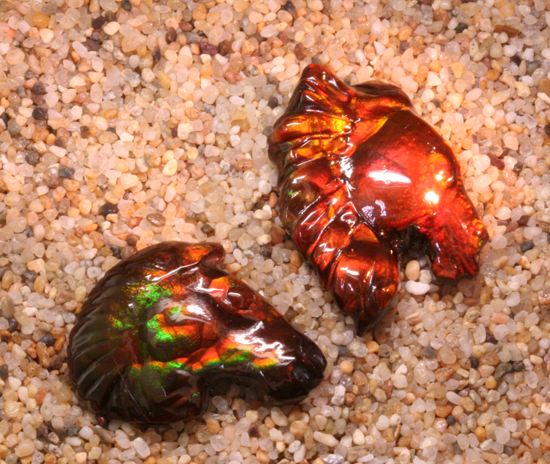
Carved Fire Agates
A service we offer is finding rare gemstones. One of my “quests” at Tucson 2010 was for an unusual stone for a client who owns a stable of Tennessee Walking Horses. One of his horses is a World Grand Champion, so he was interested in a ring he could wear that would bring attention to his stable and horses and allow a bit of bragging as well.
My client had seen a horse-shoe ring with a center diamond carved in the shape of a horse head and thought that might be a good place to start. My idea was that we could do something truly outstanding and noteworthy by using a colored gemstone, so he agreed to give it a try.
We were able to locate these extraordinary carved horse heads of fire agate by master fire agate carver Joe Intili. These are “quarter size” stones, ideal for a large and dramatic man’s ring or an outstanding bolo tie.
The stone on the right actually has been named by its owner, Bob Beaudry— he calls it the “The Strawberry Roan.” Like other famous fire agates, this one certainly deserves a nickname. This museum quality gemstone is one-of-a-kind, absolutely unique and irreplaceable, 100% natural and untreated, and of course truly American– it was discovered at the mine on Slaughter Mountain, Arizona.
Even if the artist were to carve the exact same shape, the nature of fire agate means that no two stones are alike or even close! Notice Joe’s deft touch with the material– the eyes on these carved gems look right at you!
My client passed on the Strawberry Roan– turns out he is color blind and couldn’t really appreciate the beauty of these gems. I guess diamond with it’s sparkle and dancing light is a better choice for him.
Even if you are not in the market for an exotic and rare gem like this (and these days, many of us are not!), Mardon offers many unusual gifts for Dad, from affordable items from our famous Raincross Collection or the William Henry studio starting around $150, to unusual estate pieces, and outstanding custom designed creations. If Pop is a sentimental old softie, give him your portrait or a favorite picture in precious metal. Just don’t forget dear old Dad- he deserves your best!
Tags: Bob Beaudry, Custom Designed Jewelry, Estate Jewelry, Father's Day, Father's Day gifts, fire agate, Joe Intili, Precious Portraits, Raincross, Slaughter Mountain, Strawberry Roan, Tucson, Willam Henry
Posted in Custom Jewelry, Gemstones, Jewelry Facts, Jewelry Services, Mardon Exclusive Jewelry, Mardon Happenings | Comments Off on Father’s Day Gift Par Excellence- A Carved Fire Agate
May 27th, 2010 by James L. Sweaney, CGA, FGA. GG
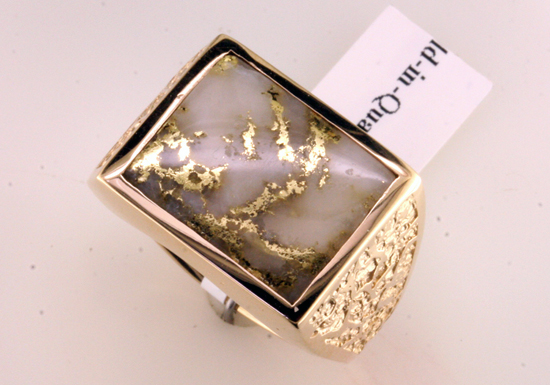
Gympie Gold in Quartz in Mardon Ring
For a very special gift for Father’s Day or perhaps an anniversary, consider this striking one-of-a-kind man’s ring, set with a gorgeous gold in quartz gemstone from the Eldorado Mine in Gympie, Queensland, Australia. You can easily see the dramatic eruption of pure gold in the white quartz matrix– simply stunning!
I picked this gem out at Tucson a while back from the booth of an affable Aussie– Aussie gem dealers are alway a hoot to work with– they have such joie de vivre and a good sense of fun– he had absolutely the best selection of gold in quartz that I had ever seen. The current activity in the gold market got me to thinking about the stone again, and finally, inspiration struck!
Good quality gold in quartz stones are very rare on the market today– it’s actual gold ore, where native veins and crystals of pure gold are present in white quartzite, so it usually gets processed for the metal. The only way we see gold in quartz gemstones is when the veining is rich and picturesque and the quartz in very white as well as being stable enough to fashioned into gems.
The Sierra Nevada mountains of California produced a lot of gold in quartz during the Gold Rush days of the Forty-Niners, but most of that material I have seen is less dramatic than this Gympie material.
We created the ring with our JewelSmith CAD/CAM system– I sketched out the design concept which daughter Jenny skillfully executed. We particularly like the contrast between the matte finish and polished veins on the sides of the ring.

Tags: CAD/CAM, Eldorado Mine, Father's Day, gold-in-quartz, Gympie, JewelSmith, Sierra Nevada
Posted in Custom Jewelry, Gemstones, Jewelry Services, Mardon Exclusive Jewelry, Mardon Happenings | 1 Comment »




